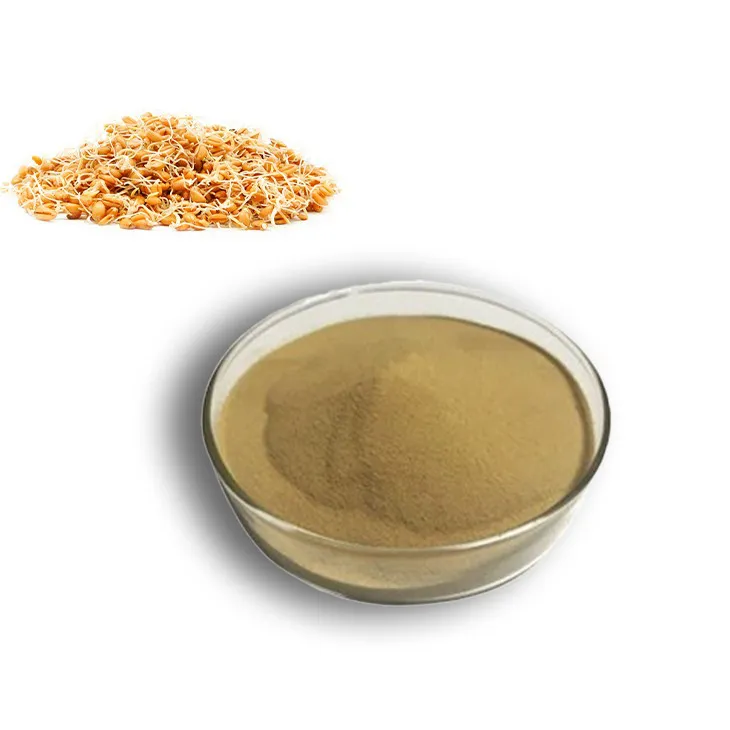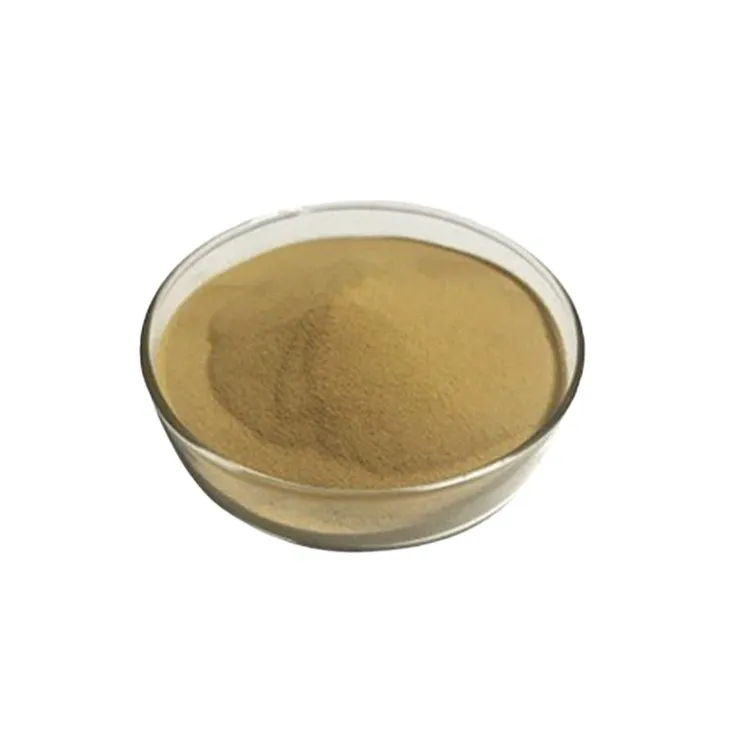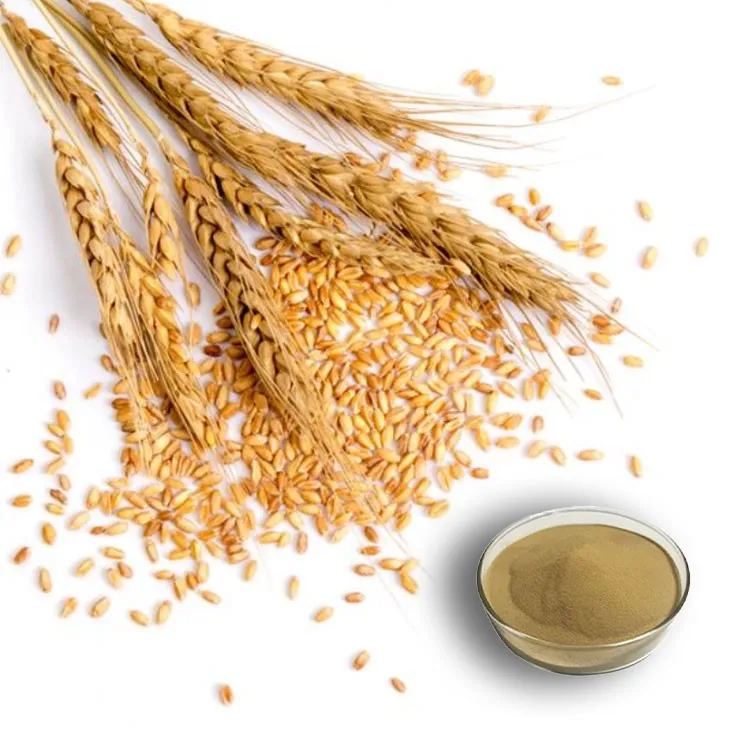- 0086-571-85302990
- sales@greenskybio.com
The process of extracting wheat germ tocopherol from wheat germ extract.
2024-11-29

1. Introduction
Wheat germ tocopherol is a significant antioxidant that has found extensive applications in various industries such as food, cosmetics, and pharmaceuticals. Antioxidants play a crucial role in preventing oxidative damage in living organisms and in products where they are incorporated. Wheat germ is a rich source of tocopherol, and the extraction process from Wheat Germ Extract is a complex yet well - studied area.

2. Initial Pretreatment of Wheat Germ Extract
2.1 Filtration
The first step in the extraction of wheat germ tocopherol from the extract is filtration. This process is essential for removing impurities present in the Wheat Germ Extract. The impurities can range from large particulate matter such as pieces of the wheat germ husk to smaller insoluble substances. Filtration can be carried out using different types of filters depending on the nature and size of the impurities to be removed. For example, membrane filters are often used when fine particles need to be removed. These filters have pores of a specific size that allow the liquid part of the extract (which may contain the tocopherol) to pass through while retaining the solid impurities.
2.2 Degumming
Another important pretreatment step is degumming. Wheat germ extract may contain gums, which are complex mixtures of carbohydrates and proteins. These gums can interfere with the subsequent extraction steps. Degumming involves the addition of certain chemicals or enzymes that break down the gums into simpler components. For instance, the addition of phospholipase enzymes can hydrolyze the phospholipids present in the gums, making them more soluble and easier to remove. This step not only helps in improving the purity of the extract but also enhances the efficiency of the tocopherol extraction process.

3. Solvent Extraction
Once the initial pretreatment steps are completed, the next major step is solvent extraction. This process involves the use of suitable organic solvents to selectively isolate the tocopherol compounds from the wheat germ extract.
3.1 Selection of Solvents
The choice of solvent is crucial in solvent extraction. Ideal solvents should have a high affinity for tocopherol while having a relatively low affinity for other components in the wheat germ extract. Some commonly used solvents include hexane, ethanol, and ethyl acetate. Hexane is a non - polar solvent that is very effective in extracting non - polar tocopherol molecules. Ethanol, on the other hand, is a polar solvent that can also be used, especially when a more selective extraction of tocopherol is required. Ethyl acetate is another option that offers a balance between polarity and non - polarity.
3.2 Extraction Process
The extraction process typically involves mixing the pretreated wheat germ extract with the selected solvent in a suitable container. This mixture is then agitated for a certain period to ensure maximum contact between the solvent and the tocopherol in the extract. The agitation can be carried out using mechanical stirrers or by using shaking devices. After the agitation, the mixture is allowed to stand for a while to allow the phases to separate. The tocopherol - rich solvent phase will be on top (if the solvent is less dense than the aqueous phase in the extract) or at the bottom (if the solvent is denser).

4. Centrifugation
After solvent extraction, centrifugation is carried out to further separate the phases. Centrifugation helps in accelerating the separation process by applying a centrifugal force to the mixture. This force causes the denser particles or phases to move towards the outer edge of the centrifuge tube, while the less dense phases remain towards the center.
4.1 Types of Centrifuges
There are different types of centrifuges available for this purpose. Bench - top centrifuges are commonly used in small - scale laboratory extractions. These centrifuges have a relatively small capacity but are sufficient for experimental purposes. For larger - scale industrial extractions, industrial - scale centrifuges with a much larger capacity are used. These centrifuges can handle large volumes of the extraction mixture and are designed to operate continuously for extended periods.
4.2 Centrifugation Parameters
The success of centrifugation depends on several parameters such as the speed of rotation (expressed in revolutions per minute, rpm), the duration of centrifugation, and the radius of the centrifuge rotor. Higher speeds and longer durations generally result in better separation, but these parameters need to be optimized based on the nature of the extraction mixture and the desired level of separation.

5. Purification
Following centrifugation, the tocopherol - containing phase still requires further purification to obtain high - quality wheat germ tocopherol. This purification is achieved through distillation and chromatography techniques.
5.1 Distillation
Distillation is used to separate the tocopherol from the solvent. The principle behind distillation is the difference in boiling points between the solvent and the tocopherol. If the solvent has a lower boiling point than the tocopherol, it can be evaporated off by heating the mixture under controlled conditions. The evaporated solvent can then be condensed and collected for reuse. For example, in the case of hexane extraction, hexane has a relatively low boiling point and can be easily removed by distillation, leaving behind the tocopherol.
5.2 Chromatography
Chromatography is a more advanced purification technique used to further purify the tocopherol. There are different types of chromatography techniques that can be applied, such as column chromatography and high - performance liquid chromatography (HPLC).
5.2.1 Column Chromatography
In column chromatography, a column is filled with a stationary phase (such as silica gel or alumina). The tocopherol - containing sample is then loaded onto the top of the column, and a mobile phase (a solvent or a solvent mixture) is passed through the column. Different components in the sample will interact differently with the stationary and mobile phases, causing them to move at different rates through the column. This allows for the separation of tocopherol from other remaining impurities.
5.2.2 High - Performance Liquid Chromatography (HPLC)
HPLC is a more sophisticated and precise form of chromatography. It uses high - pressure pumps to force the mobile phase through a very narrow column filled with a fine - particle stationary phase. This allows for a much higher resolution of separation. HPLC can be used to separate different isomers of tocopherol, which is important as different isomers may have different biological activities and applications.
6. Characterization and Quality Control
Once the purification steps are complete, the final wheat germ tocopherol product needs to be characterized and subjected to quality control measures.
6.1 Characterization
Characterization involves determining the chemical and physical properties of the tocopherol. This includes analyzing its chemical composition (identifying the different isomers present), its purity level (determining the percentage of tocopherol in the final product), and its physical properties such as melting point, solubility, etc. Techniques such as spectroscopy (including infrared spectroscopy and nuclear magnetic resonance spectroscopy) and mass spectrometry are often used for these characterizations.
6.2 Quality Control
Quality control is essential to ensure that the final product meets the required standards for its intended applications. This includes checking for the presence of any residual solvents (which should be within the acceptable limits), ensuring the correct concentration of tocopherol, and verifying that the product is free from contaminants. Samples of the final product are regularly tested in a quality control laboratory using standardized test methods.
7. Applications of Wheat Germ Tocopherol
Wheat germ tocopherol, once extracted and purified, has a wide range of applications in different industries.
7.1 Food Industry
In the food industry, wheat germ tocopherol is used as a natural antioxidant. It helps in preventing the oxidation of fats and oils in food products, thereby increasing their shelf - life. It can be added to various food products such as oils, margarine, baked goods, and processed meats. Additionally, tocopherol is also considered a nutritional supplement as it is an essential vitamin (vitamin E) for human health. It can be added to fortified foods and dietary supplements.
7.2 Cosmetics Industry
The antioxidant properties of wheat germ tocopherol make it a valuable ingredient in the cosmetics industry. It is used in skin care products such as creams, lotions, and serums. Tocopherol helps in protecting the skin from oxidative damage caused by environmental factors such as UV radiation and pollution. It also has moisturizing properties and can help in reducing the signs of aging, such as wrinkles and fine lines.
7.3 Pharmaceuticals Industry
In the pharmaceuticals industry, wheat germ tocopherol has potential applications in drug formulations. It can be used as an antioxidant to protect drugs that are sensitive to oxidation. Additionally, research has shown that tocopherol may have certain pharmacological properties, such as anti - inflammatory and anti - cancer effects. However, more research is needed in these areas to fully understand and exploit its potential in pharmaceutical applications.
8. Conclusion
The extraction of wheat germ tocopherol from wheat germ extract is a multi - step process that involves initial pretreatment, solvent extraction, centrifugation, purification, characterization, and quality control. Each step is crucial in obtaining high - quality tocopherol with a wide range of applications in food, cosmetics, and pharmaceuticals. As research continues, there may be further improvements in the extraction process, leading to more efficient and cost - effective production of wheat germ tocopherol.
FAQ:
What are the common impurities in wheat germ extract during the extraction of wheat germ tocopherol?
Common impurities in wheat germ extract may include proteins, lipids, and other non - tocopherol compounds. Proteins can be present as they are a major component of wheat germ. Lipids other than tocopherol - containing ones can also be there. Additionally, small amounts of carbohydrates and minerals may also be considered as impurities in this context.
Why are organic solvents used for solvent extraction in the process?
Organic solvents are used for solvent extraction because tocopherol compounds are more soluble in certain organic solvents compared to the other components in the wheat germ extract. These solvents can selectively dissolve the tocopherol, allowing for its separation from the rest of the mixture. Different organic solvents may be chosen based on their selectivity, solubility properties, and ease of handling in the extraction process.
How does centrifugation contribute to the separation of phases?
Centrifugation uses the principle of centrifugal force. When the sample is spun at high speed in a centrifuge, the components with different densities separate into different layers or phases. In the case of wheat germ tocopherol extraction, the centrifugation helps in separating the solvent - containing tocopherol phase from other denser or lighter phases such as the remnants of impurities or other non - soluble components, thus facilitating further purification steps.
What are the specific applications of high - quality wheat germ tocopherol in the food industry?
In the food industry, high - quality wheat germ tocopherol is used as a natural antioxidant. It helps in preventing the oxidation of fats and oils in food products, thereby increasing their shelf life. It can be added to various processed foods like baked goods, oils, and margarine. Additionally, it may also contribute to the nutritional value of the food as tocopherol is a form of vitamin E.
What are the differences between distillation and chromatography techniques in purifying wheat germ tocopherol?
Distillation is a process based on the differences in boiling points of components. In the context of wheat germ tocopherol purification, it can separate the tocopherol from other components with different boiling points. Chromatography, on the other hand, is based on the differential affinities of components to a stationary phase and a mobile phase. It can provide a more detailed separation based on the chemical properties of the tocopherol and other remaining impurities. While distillation is more about separating by volatility, chromatography offers a more refined separation based on different chemical interactions.
Related literature
- Extraction and Characterization of Tocopherols from Wheat Germ"
- "Optimization of Wheat Germ Tocopherol Extraction: A Review"
- "Applications of Wheat Germ Tocopherol in the Pharmaceutical and Cosmetic Industries"
- ▶ Hesperidin
- ▶ Citrus Bioflavonoids
- ▶ Plant Extract
- ▶ lycopene
- ▶ Diosmin
- ▶ Grape seed extract
- ▶ Sea buckthorn Juice Powder
- ▶ Fruit Juice Powder
- ▶ Hops Extract
- ▶ Artichoke Extract
- ▶ Mushroom extract
- ▶ Astaxanthin
- ▶ Green Tea Extract
- ▶ Curcumin
- ▶ Horse Chestnut Extract
- ▶ Other Product
- ▶ Boswellia Serrata Extract
- ▶ Resveratrol
- ▶ Marigold Extract
- ▶ Grape Leaf Extract
- ▶ New Product
- ▶ Aminolevulinic acid
- ▶ Cranberry Extract
- ▶ Red Yeast Rice
- ▶ Red Wine Extract
-
Garcinia Cambogia Extract
2024-11-29
-
Citrus bioflavonoids
2024-11-29
-
Calendula Extract
2024-11-29
-
melatonin extract
2024-11-29
-
Horse Chestnut Extract
2024-11-29
-
Lily extract
2024-11-29
-
Acerola Extract
2024-11-29
-
Gynostemma pentaphyllum extract
2024-11-29
-
Black Garlic Extract
2024-11-29
-
Nutmeg Extract
2024-11-29





















